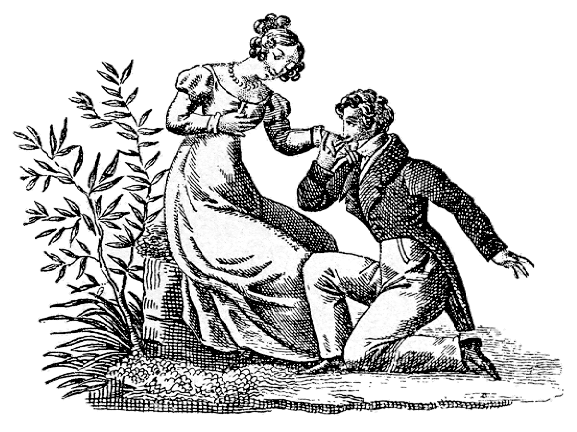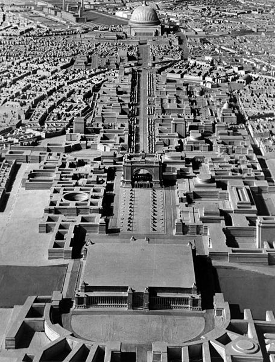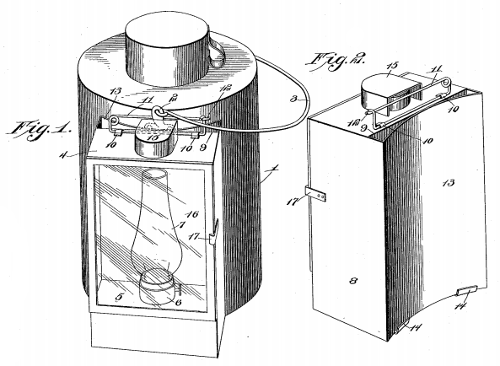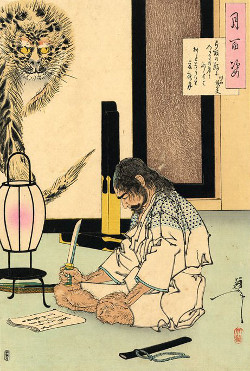
aknee
adj. on one’s knees
procation
n. a marriage suit

aknee
adj. on one’s knees
procation
n. a marriage suit
A fragment from Robert Frost’s notebook on “Democracy”:
Cancellation Club. A mens club for rendering womens vote ineffective by voting the other way. One woman said No matter if her vote was offset. She only voted to assert herself — not to win elections.
A word-level palindrome by Allan Miller (from Mad Amadeus Sued a Madam):
MAYBE GOD CAN KNOW ALL WE DO; WE ALL KNOW, CAN GOD? MAYBE …
“I read the Tchechov aloud. I had read one of the stories myself and it seemed to me nothing. But read aloud, it was a masterpiece. How was that?” — Katherine Mansfield, journal, 1922
Dryden’s epitaph on his wife:
Here lies my wife, here let her lie;
Now she’s at rest, and so am I.
(Thanks, Bob.)
![]()
In the 18th century Jeremy Bentham proposed building a circular prison in which well-lit cells face a central “inspection house” where a single watchman dwells. Because the prisoners can’t see the watchman, they never know when they’re being watched and so must constantly police their own behavior.
Bentham called this “a mill for grinding rogues honest” and listed the benefits in the preface to a 1791 book: “Morals reformed — health preserved — industry invigorated — instruction diffused — public burthens lightened — Economy seated, as it were, upon a rock — the gordian knot of the poor-law not cut, but untied — all by a simple idea in Architecture!”
He was so taken with the idea that he proposed putting it into practice himself. “Allow me to construct a prison on this model,” he wrote to the Committee for the Reform of Criminal Law. “I will be the gaoler. You will see … that the gaoler will have no salary — will cost nothing to the nation.” He spent much of the 1790s pursuing the project, but he couldn’t find enduring support for it and nothing was ever built.
(Thanks, Anna.)
11/27/2016 UPDATE: Cuba built one. (Thanks, Saber.)
“The fundamental cause of the trouble is that in the modern world the stupid are cocksure while the intelligent are full of doubt.” — Bertrand Russell
1 + 2 = 3
1×2 + 2×3 + 3×4 = 4×5
1×2×3 + 2×3×4 + 3×4×5 + 4×5×6 = 5×6×7
1×2×3×4 + 2×3×4×5 + 3×4×5×6 + 4×5×6×7 + 5×6×7×8 = 6×7×8×9
In general, the sum of the first (n+1) products of consecutive n-tuples of consecutive integers is equal to the product of the next n-tuple.
(Thanks, Peter.)

Hitler’s chief architect, Albert Speer, favored a “theory of ruin value” in which German buildings would collapse into aesthetically pleasing ruins, like those of classical antiquity. “I want German buildings to be viewed in a thousand years as we view Greece and Rome,” he said.
Using special materials and applying statistical principles, Speer claimed to have created structures that in 1,000 years would resemble Roman ruins. “The ages-old stone buildings of the Egyptians and the Romans still stand today as powerful architectural proofs of the past of great nations, buildings which are often ruins only because man’s lust for destruction has made them such,” he wrote.
Hitler liked to say that the purpose of his building was to transmit his time and its spirit to posterity. Ultimately, all that remained to remind men of the great epochs of history was their monumental architecture, he remarked. What then remained of the emperors of the Roman Empire? What would still give evidence of them today, if not their buildings […] So, today the buildings of the Roman Empire could enable Mussolini to refer to the heroic spirit of Rome when he wanted to inspire his people with the idea of a modern imperium. Our buildings must also speak to the conscience of future generations of Germans.
Hitler endorsed the idea, favoring the use of durable materials such as granite to reflect his soaring ambitions. “As capital of the world,” he said, “Berlin will be comparable only to ancient Egypt, Babylon, or Rome!” Ironically, this came true: When ancient Rome collapsed, its greatest buildings were pillaged for building materials, and when the Russians demolished Speer’s grandiose Chancellery in 1947, its marble was reused to build a metro station.

Christina Malmo of Montana patented this combination lantern and dinner pail in 1905. The lantern, which contains its own fuel source, hugs the pail, “conducting heat to the victuals within.”
“This close connection between the lamp attachment and the dinner-pail serves the double purpose of steadying the lamp, thus avoiding any swinging which would occur were the lamp attached by any loose means. The second utility of this close connection is that the heat from the lamp is thus utilized in warming the victuals within the dinner-pail, a very useful advantage to a miner or any one who is obliged to carry his dinner for any length of time.”

In Japanese culture it is traditional to write a “farewell poem to life,” or jisei, as death approaches. Zen monk Kozan Ichikyo wrote this verse on the morning of his death in 1360:
Empty-handed I entered the world
Barefoot I leave it.
My coming, my going —
Two simple happenings
That got entangled.
And monk Mumon Gensen wrote this in 1390:
Life is like a cloud of mist
Emerging from a mountain cave
And death
A floating moon
In its celestial course.
If you think too much
About the meaning they may have
You’ll be bound forever
Like an ass to a stake.
On March 17, 1945, Gen. Tadamichi Kuribayashi sent a letter to Imperial headquarters apologizing for ceding Iwo Jima to American forces. He closed with a death poem:
Unable to complete this heavy task for our country
Arrows and bullets all spent, so sad we fall.
But unless I smite the enemy,
My body cannot rot in the field.
Yea, I shall be born again seven times
And grasp the sword in my hand.
When ugly weeds cover this island,
My sole thought shall be the Imperial Land.
His body could not be identified later — it appears that prior to the final battle he removed his officer’s insignia in order to fight among his men as an ordinary soldier.
Suppose n students are sitting at n desks in a classroom. They’re asked to stand, mill around at random, and then sit again. What is the probability that at least one student will find herself in her original seat?
Intuition says that the probability ought to drop as the number of students increases, but in fact it remains about the same:

In fact, Pierre Rémond de Montmort showed in 1708 that it’s

… which approaches 1 – 1/e, or about 0.63212. Whether there are 10 students or 10,000, the chance that at least one student returns to her own seat is about 2/3.